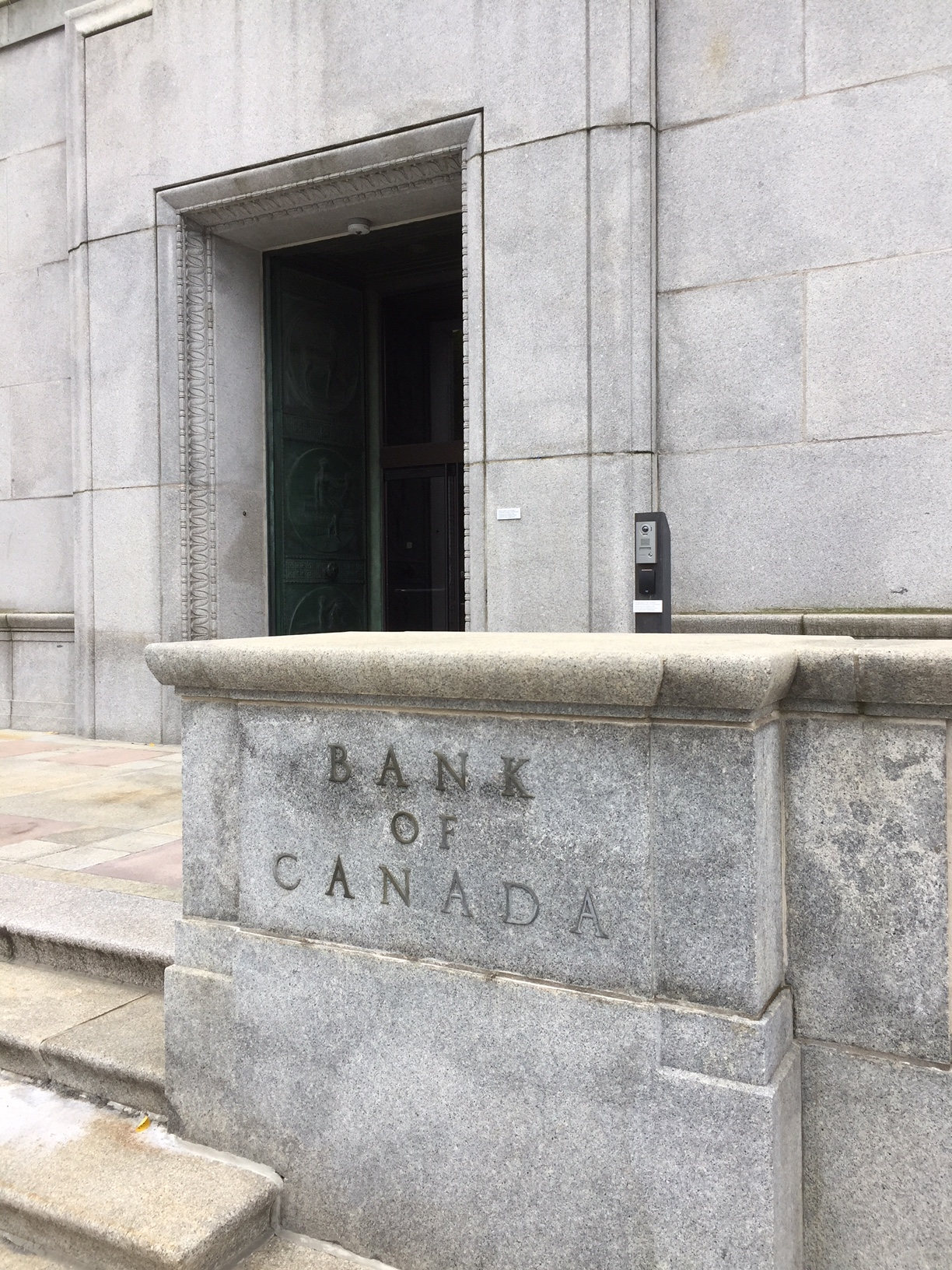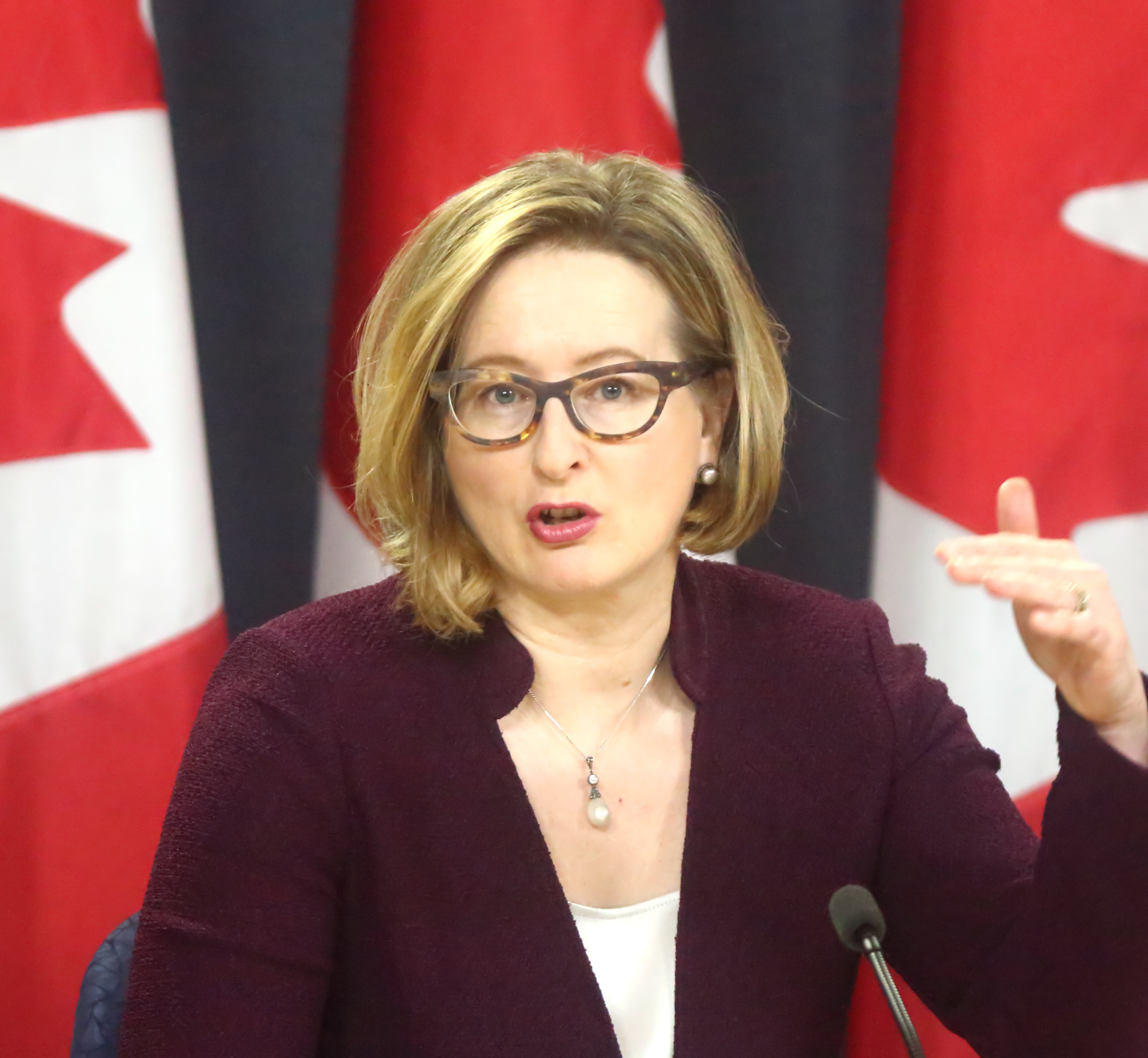
The popularity of fixed mortgage rates in 2019 was unmistakable. But the Bank of Canada may have moved the needle for variable rates with its comments Wednesday.
Below are the week’s top 10 statements from the BoC, all of which will be of interest to any serious rate watcher.
The below quotes come from Bank of Canada Governor Stephen Poloz and Senior Deputy Governor Carolyn Wilkins. Our take in italics.
********
1) Poloz: “I’m not saying that the door is not open to an interest rate cut. Obviously it is, it is open. But it hinges on how the data evolve from here.”
- The BoC is sitting on the fence but leaning slightly towards a cut. The market now expects a 26% chance of a rate cut on March 4 and at least one full cut by October. (Source: Bloomberg)
- “Most central bank governors would only tell us that the door is open for an interest rate cut – as Bank of Canada Governor Stephen Poloz did on Wednesday – if they wanted to signal that a cut was on the way,” wrote Capital Economics’ Stephen Brown.
2) Poloz: “It would not be a [rate] cut against a hypothetical or a possibility … It would mean that the forecast was showing, for us, a meaningful shortfall on our inflation target and that we felt compelled to act on it.”
- Poloz suggested he wouldn’t make an “insurance” cut. The BoC has considered them, as he admitted in October, but he’s since stated he wants to see clear evidence of a weakening inflation outlook before pulling the trigger.
- On the other hand, what the BoC admits and what it does are two different things. It knows well that “failure to be proactive would end up forcing the BOC to lower rates even more over time,” as Bloomberg News wrote this week.
 3) Poloz: “Some of those downside risks [discussed in October] have clearly landed and they’ve crystallized … Now we’re assessing how big they actually are and whether they will continue to get bigger, or last longer, than we’re supposing.”
3) Poloz: “Some of those downside risks [discussed in October] have clearly landed and they’ve crystallized … Now we’re assessing how big they actually are and whether they will continue to get bigger, or last longer, than we’re supposing.”- “Household consumption, which accounts for about 56% of gross domestic product, has been growing at the slowest pace outside recession since at least the early 1960s,” notes Bloomberg News.
- Barring an all-out crisis, if the BoC revises its growth forecasts lower 1-2 more times, and there’s no rebound in economic activity in Q1, and core inflation breaks below 2%, a rate cut would likely be in play.
4) Poloz: “…If the slowdown proved to be more persistent than what we’ve built into that base case, then that downward pressure would become larger, and it’s that downside risk that we compare or measure against the other risks that we would be adding to the system by lowering interest rates and potentially fuelling financial vulnerabilities.”
- When the BoC views the risk of cutting rates as roughly equivalent to the risk of standing pat, the country’s high debt loads and home prices are a tie breaker, discouraging the BoC from easing. But make no mistake, when unemployment starts shooting north of 6% and inflation dives below 2%, rate cuts will be on the table—regardless of what housing’s doing.
5) Wilkins: “We see a rebound coming, we don’t think the weakness in mixed data that we saw later last year will be persistent.”
- The BoC expects “a pickup in growth in the first quarter and then stronger [growth] in the second quarter.” If that doesn’t play out, look out. It could pull down the Bank’s inflation projections and warrant more serious consideration of rate cuts.
6) Poloz: “…Companies in Canada are very ready, have been for some time, to invest and the big thing holding them back has been the uncertainty around the future of NAFTA/CUSMA. So if we get that ratification done, I think that is going to make a meaningful difference to investment in Canada.”
- More than a few economists doubt that NAFTA 2.0 will generate a significant boost to GDP. If we’re lucky, it’ll be a wash for trade.
 7) Wilkins: “The one thing with vulnerabilities is that we do see that they have been stabilizing, the housing market is starting to stabilize in different places and we don’t see the froth and we see more savings than we thought we had given historical revisions. That’s important information.”
7) Wilkins: “The one thing with vulnerabilities is that we do see that they have been stabilizing, the housing market is starting to stabilize in different places and we don’t see the froth and we see more savings than we thought we had given historical revisions. That’s important information.”- Fundamentals (rates, tight supply, immigration, strong employment, etc.) are all revving the engine for housing. Realtors we talk to in places like the GTA and GVA expect a vigorous spring market. Surely the BoC wouldn’t downplay that because it has a rate cut bias?
8) Wilkins: “…There’s a tradeoff…about vulnerabilities in the housing sector…with respect to how well we think we can control household vulnerabilities increasing more than where they are today…that could mean further down the road a negative shock could make growth slow.”
- Canada’s invisible hand is keeping the stress test rate inflated at 5.19%, making it harder to get approved for a mortgage. Until that rate starts dropping, the Bank of Canada has more to fear by not easing in the face of disinflation, than by cutting and boosting housing “vulnerabilities.”
9) Wilkins: “We’ve been very clear that we think that the [mortgage] stress test, B-20, has done a very good job of safeguarding the system…”
- If it wasn’t clear enough already, mortgage risk is not a good enough reason to delay a rate cut if inflation risks undershooting the BoC’s target.
10) Wilkins: “When the [mortgage] stress test was brought in, it was brand new, it was put in [at] a time when interest rates were really low. And anybody who’s been doing financial regulation long enough knows that as you see these things at play, you realize that maybe there are some desirable tweaks that could be made.”
- The Bank of Canada seems open to stress test changes and its opinion is weighed heavily by regulators. What those tweaks may be and when they might happen is anyone’s guess.
(BoC quote source: National Post)

 log in
log in